Acoustics play a crucial role in enhancing the overall comfort, communication, privacy, and productivity within a workspace. When discussing acoustics, end users often find themselves balancing acoustic needs against aesthetic values. Manufacturers have created products that fulfill both aesthetic and acoustic purposes, including:
- Flooring Materials: Carpet, resilient vinyl tile (LVT), PET Recycled materials, and area rugs
- Wall Materials: Acoustic panels, artistic wall pieces, wall coverings, and drapery
- Ceiling Materials: Acoustic clouds, beams, and light baffles
- Sound Masking Solutions: Utilizing machines that create ambient noise
- Furnishings
- Plants and Biophilia
The effective integration of acoustic materials and furnishings can enhance the overall design of a space seamlessly.
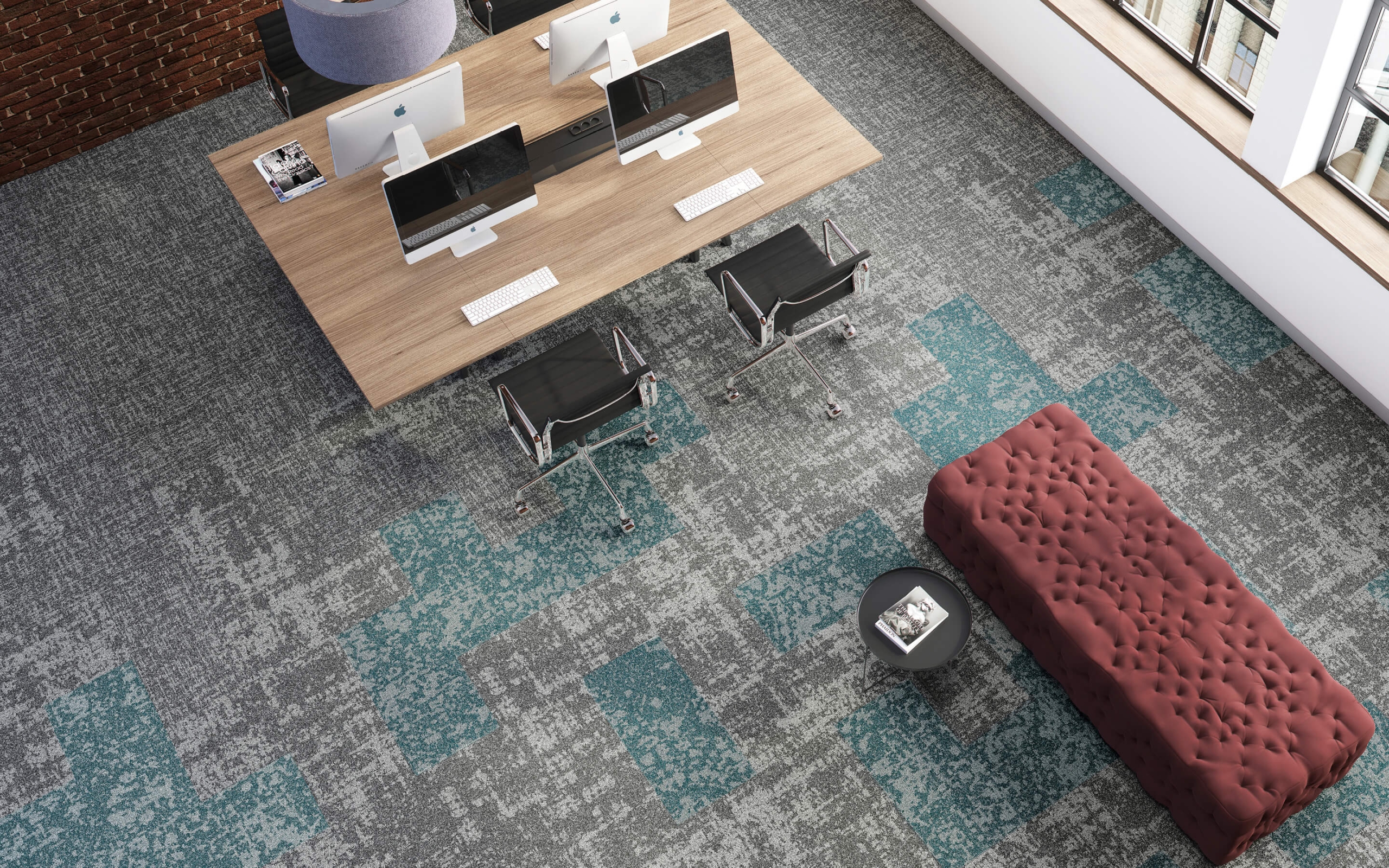
Flooring Acoustics
Each flooring material offers distinct benefits and challenges when it comes to sound absorption and noise reduction.
Carpet, for instance, is known for its excellent sound insulation qualities. It absorbs impact noise, such as footsteps, and reduces airborne sound, making it a preferred option for areas where noise control is essential, like bedrooms and living rooms.
PET recycled materials, often used in carpet backing or underlays, provide an eco-friendly solution that also contributes to sound absorption. These materials are made from recycled plastic bottles, making them an environmentally responsible choice that supports sustainability without compromising on performance.
Resilient Luxury Vinyl Tile (LVT) offers a balance of durability and acoustic benefits. It has a softer underfoot feel compared to harder flooring options, which helps in minimizing impact noise. Additionally, many LVT products come with an attached underlayment or can be paired with a separate acoustic underlayment to further enhance their sound-dampening capabilities.
Area rugs can provide an alternative and luxurious acoustic flooring solution that can be easily changed or updated, allowing you to refresh your interior design without the need for a complete overhaul. They offer a practical yet stylish way to define spaces while providing additional acoustic value.
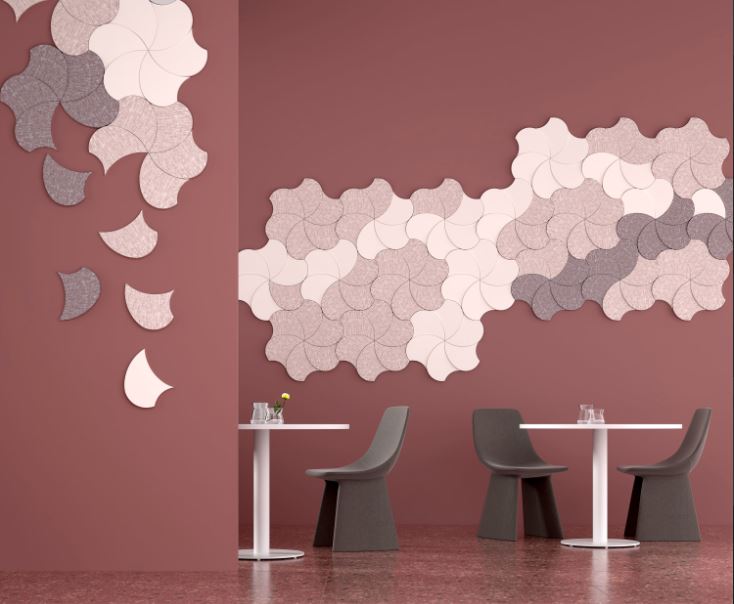
Wall Acoustics
Other sound-absorbing materials are transforming modern interior design by seamlessly blending functionality with aesthetic appeal. These innovative solutions not only enhance the auditory experience within a space but also contribute to the overall ambiance and visual interest.
Acoustic wallcoverings are often designed with stylish patterns and textures that can complement any décor, while effectively reducing noise levels. Acoustic panels, can be strategically placed to optimize sound quality and minimize echo, making them ideal for offices, conference rooms, and even home theaters.
Incorporating biophilia into acoustic design introduces elements of nature, such as living walls or moss panels, which not only absorb sound but also promote well-being and a sense of tranquility.
Together, these acoustic solutions contribute to creating more comfortable, functional, and aesthetically pleasing spaces, where noise levels are controlled, and the design reflects the unique personality and needs of its inhabitants.
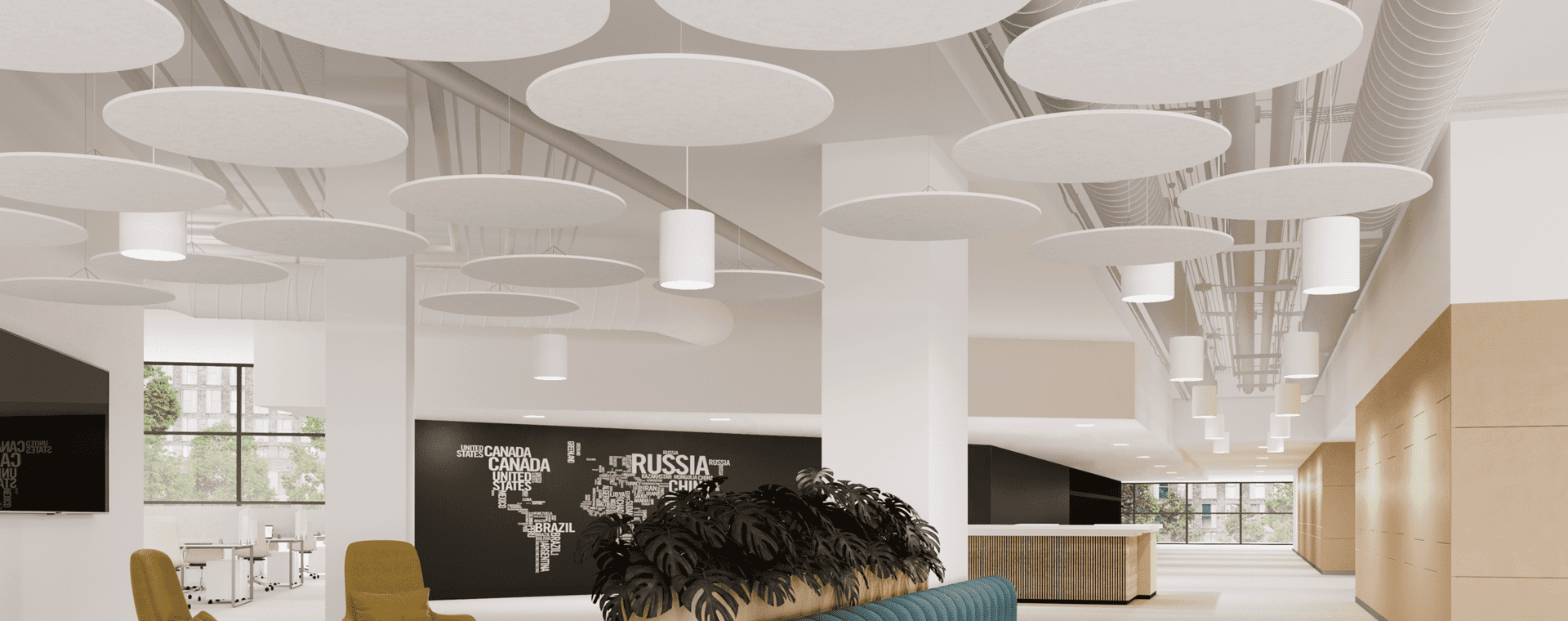
Ceiling Acoustics
Ceiling grid tiles, ceiling baffles, ceiling clouds and beams, and integrated acoustic lighting are not only functional acoustic elements but can also add a touch of aesthetic appeal to any room. Ceiling grids and tiles are often used in commercial settings to control noise levels and improve speech intelligibility, making them ideal for offices, schools, and conference rooms.
Ceiling baffles, with their vertical orientation, are particularly effective in large open spaces such as auditoriums and gymnasiums, open office settings and large break areas. They help to reduce echo and reverberation, ensuring a clearer and more pleasant auditory experience.
Ceiling clouds, on the other hand, are suspended horizontally and can be strategically placed to target specific areas needing acoustic treatment. These elements can be designed in various shapes and colors, allowing them to blend seamlessly with the interior design or even serve as a striking visual feature.
Integrated acoustic lighting combines sound absorption with illumination, offering a dual-purpose solution that maximizes functionality while minimizing visual clutter. This innovative approach is perfect for modern, minimalist spaces where every element needs to serve multiple roles without compromising on style or efficiency.
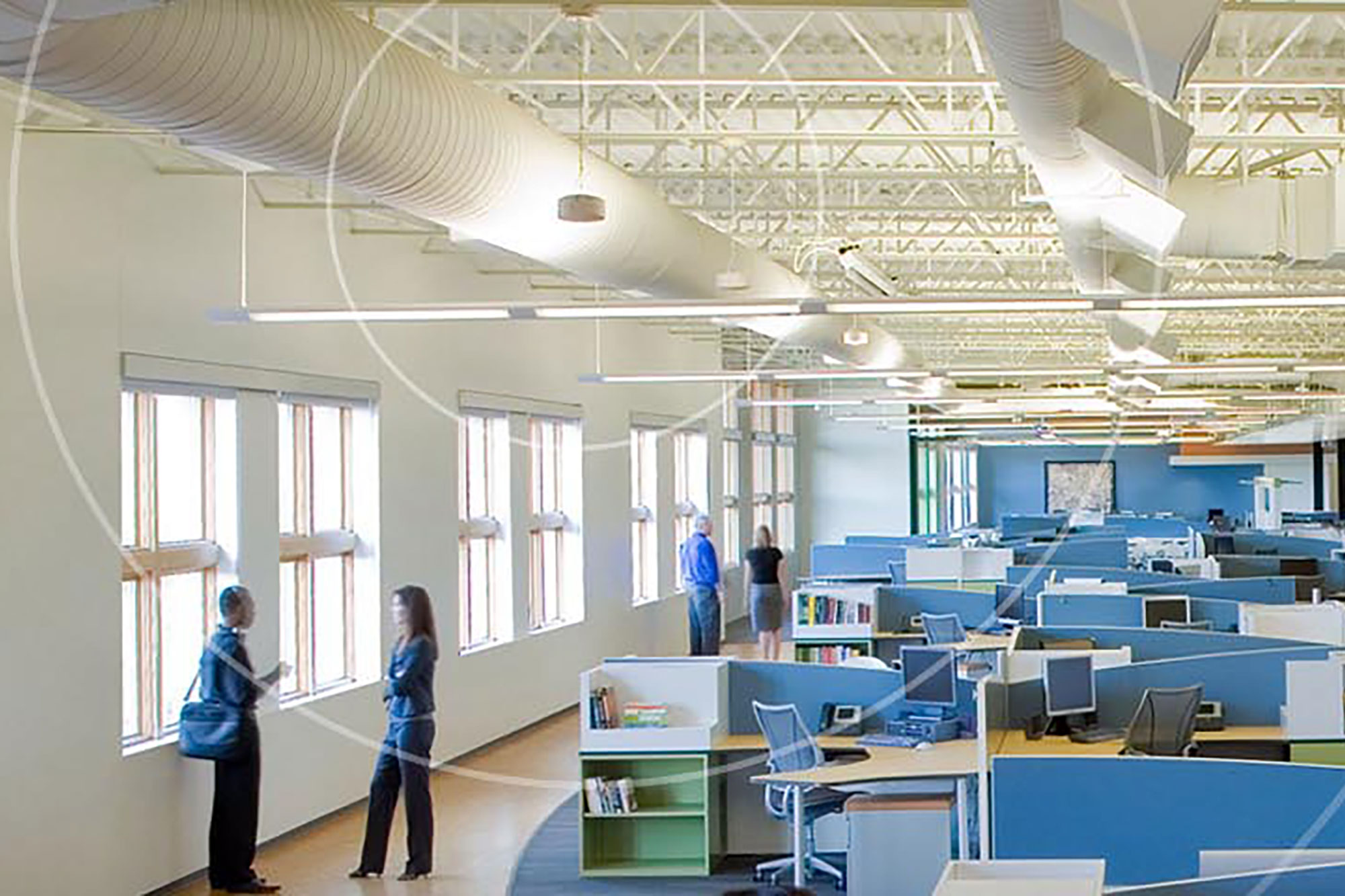
Sound Masking Systems
Sound masking systems are commonly used in open office spaces, healthcare facilities, and any setting where confidentiality is crucial. By producing a consistent ambient noise, these systems effectively cover up distracting sounds, making conversations less intelligible to unintended listeners and enhancing overall concentration. In addition, modern sound masking solutions can often be integrated with other building systems, such as HVAC and lighting controls, providing a seamless and efficient approach to creating a more comfortable and productive environment.
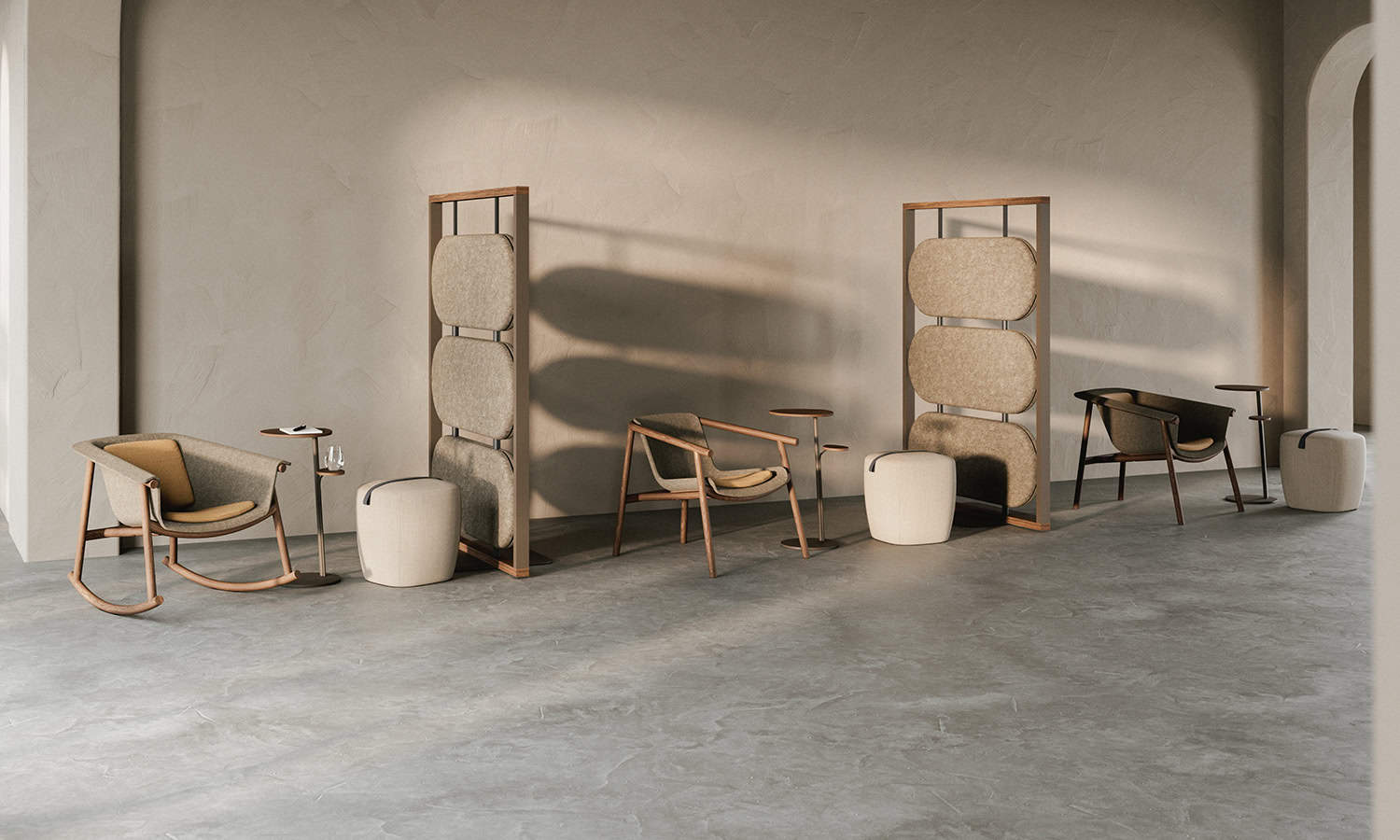
Acoustic Furnishings
Workstation panels are designed to minimize noise distractions, creating a more focused and productive workspace. Additionally, workstation panels are easy to install and rearrange, offering flexibility as the office layout evolves.
Desk dividers and modesty panels minimize distractions and allow employees to concentrate better on their tasks. These panels can also provide a sense of privacy and personal space, which is especially valuable in open-plan offices. Desk dividers can also serve as organizational tools as some come equipped with built-in storage options, such as shelves or pockets, helping to keep the workspace tidy and clutter-free. This not only enhances the visual appeal of the office but also improves efficiency and workflow.
Integrating furniture like ottomans, decorative throw pillows, and cushioned lounge pieces not only brings an element of luxury but also aids in sound absorption. This helps to minimize echoes and fosters a more tranquil environment.
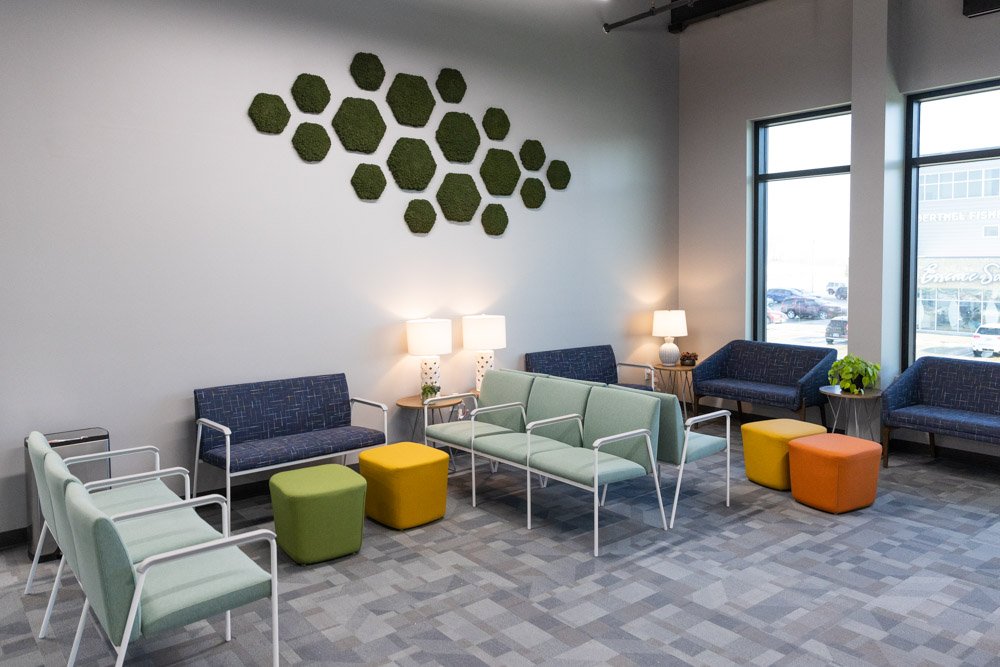
Plants and Biophilia
Incorporating plants and biophilic elements into interior design not only enhances the visual appeal but also contributes significantly to the acoustic environment. Plants can absorb, deflect, and refract sound, reducing noise levels and improving the overall ambiance of a space.
Biophilic design, which focuses on connecting occupants more closely to nature, can lead to improved well-being, increased productivity, and a greater sense of calm. This design approach includes the strategic placement of plants, green walls, and natural materials that complement acoustic elements while fostering a serene and inviting atmosphere.
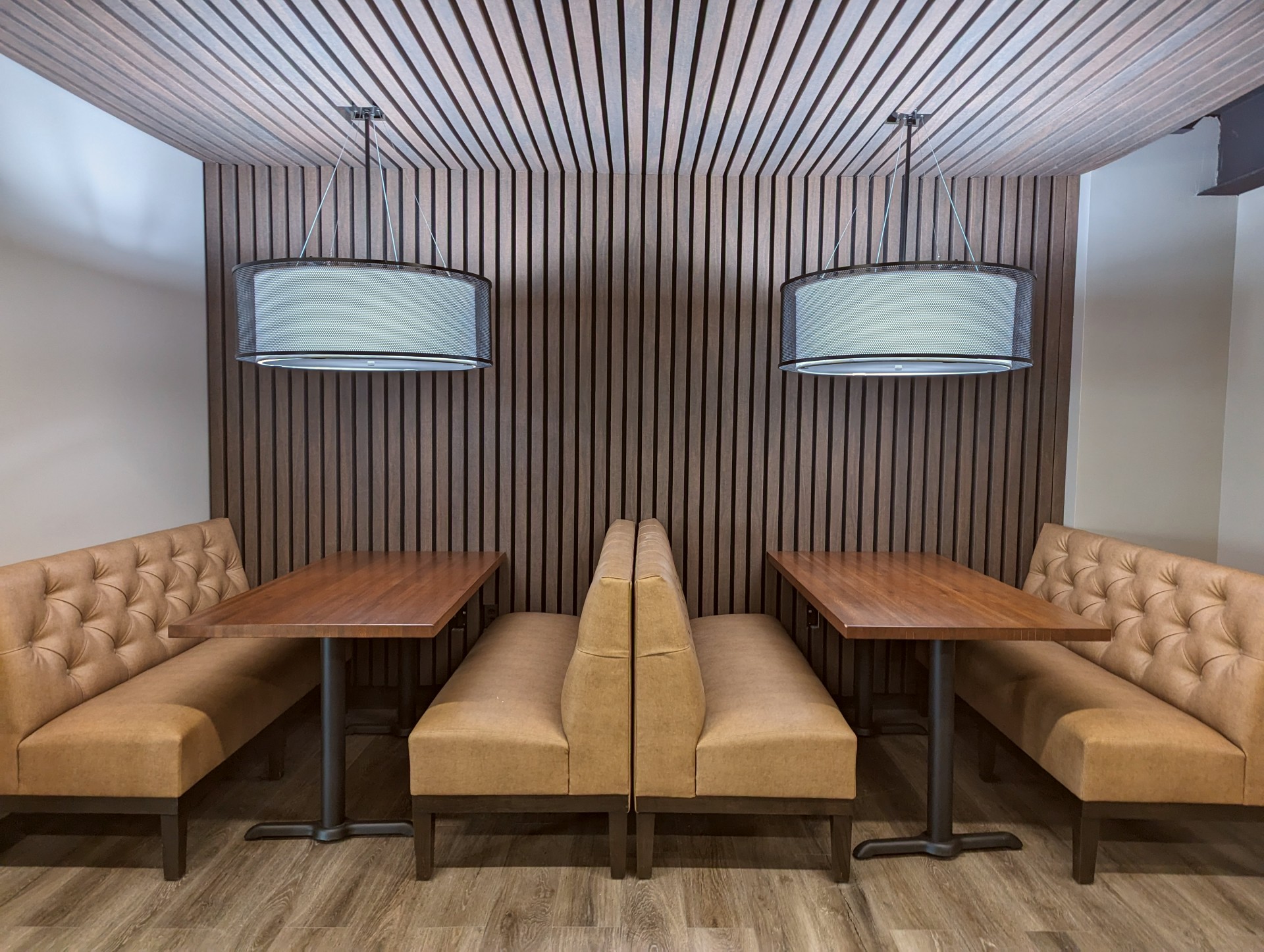
Effective acoustic design is a multifaceted approach that requires careful consideration of various elements, from flooring and wall treatments to ceiling solutions and furnishings. By thoughtfully integrating these components, designers can create harmonious spaces that enhance comfort, productivity, and well-being. As the importance of acoustics in interior design continues to grow, staying informed about the latest trends and technologies will be crucial for creating spaces that meet the diverse needs of their users.